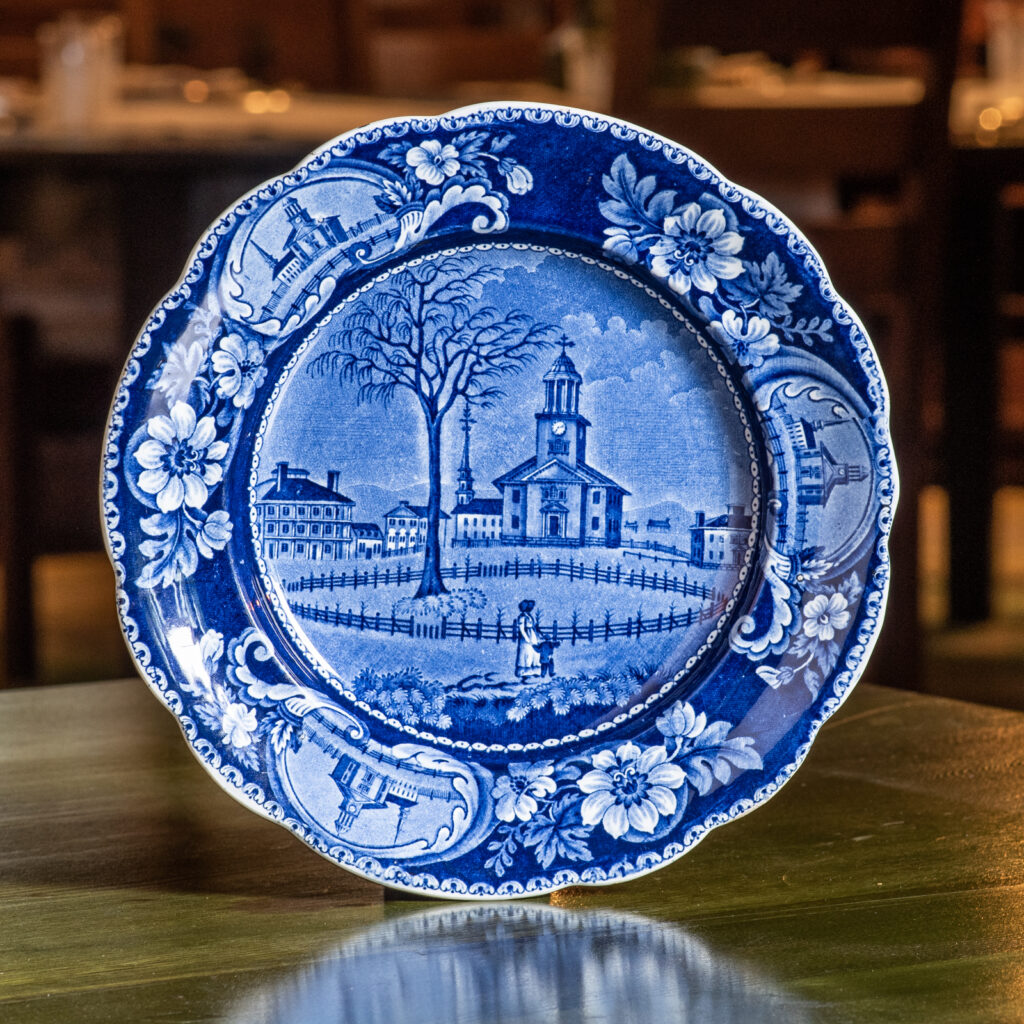Collections News: Additional Clews to Stickley’s Taste
by Jonathan Clancy, Director of Collections and Preservation

As it turns out, there are a few things I have trouble resisting. Near the top of the list is almost any pun about ceramics followed closely by the thrill of tracking down Staffordshire transferware that Stickley owned and displayed in his homes. Since the opening of last fall’s exhibition Circa 1917: Rediscovering Craftsman Farms we’ve been using the research to quietly assemble examples that broaden our understanding of what the Log House interior (and by extension) Stickley’s personal tastes reflected.
While Stickley owned at least two examples of work made by James Clews and his brother Ralph, we should understand this as an aesthetic appreciation rather than a moral endorsement. Their business was run along lines so antithetical to the ideals of the Arts and Crafts movement that one senses even Stickley–a resolutely stoic figure–might have shaken his head in disgust had he known then what we now realize about the firm. Unrepentant and unscrupulous, they plagiarized popular designs at will, exported substandard wares to their agents (and rarely took responsibility), and paid a part of their workforce in goods, rather than money. Making matters worse, these goods were often shoddy and could not even be bartered by the employees for subsistence wages. Potter Enoch Wood’s scrapbook in the Potteries Museum at Stoke-on-Trent recounted a worker who was paid in beef (that the company valued at more than double the market rate) which contained fully 3 ¾ pounds of bones in his 5 ½ pound allotment. James Clews eventually declared bankruptcy, moved to Louisville, Kentucky–where his bankruptcy and unscrupulous nature were unknown–convinced the city to back him financially, experienced more financial difficulties, returned to England in 1841, and sold his shares in the firm. Unlike Louisville in the 1830s, time discovers all secrets. The great reward, it turns out, for living a decent life is not immortality, but descendants unashamed by your words and deeds.
Among the most frequent question we’ve gotten about these pieces is: why do you think Stickley collected them? In truth, we don’t know because we can’t know. Humans are complicated masses of conflicting impulses whose actions rarely can be simplified to a single intention. What we can say is that Staffordshire plates were immensely popular at the time, and that Stickley’s collecting was consistent with then-current tastes. Books like Edwin Atlee Barber’s Anglo-American Pottery, Alice Earle’s China Collecting in America, and N. Hudson Moore’s The Old China Book reflected and amplified the interest in Staffordshire ware in the 1890s and early 1900s. Even potter Adelaide and husband Samuel Robineau joined the growing chorus of enthusiasts, publishing the magazine Old China in addition to their better-known Keramic Studio. In essence, people collected then for the same reasons they do now: the love of beautiful things, the thrill of the hunt, and because it brought them into and elevated them within a community of like-minded collectors.